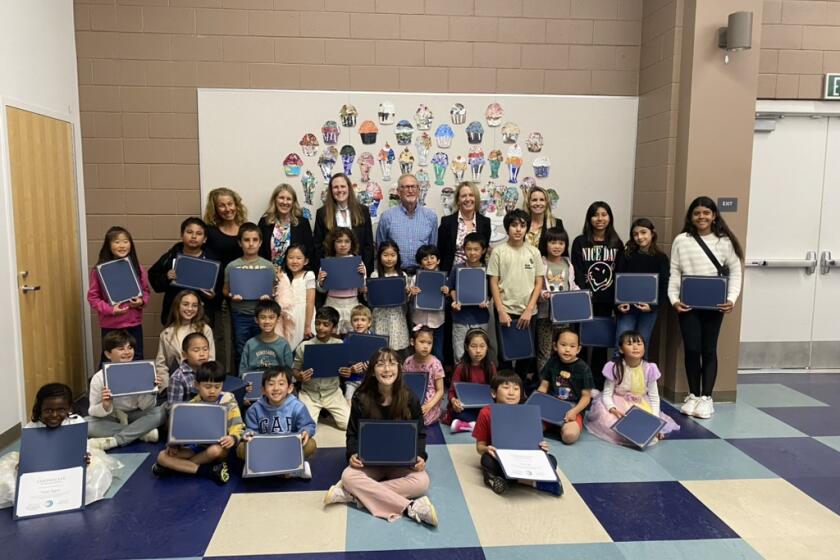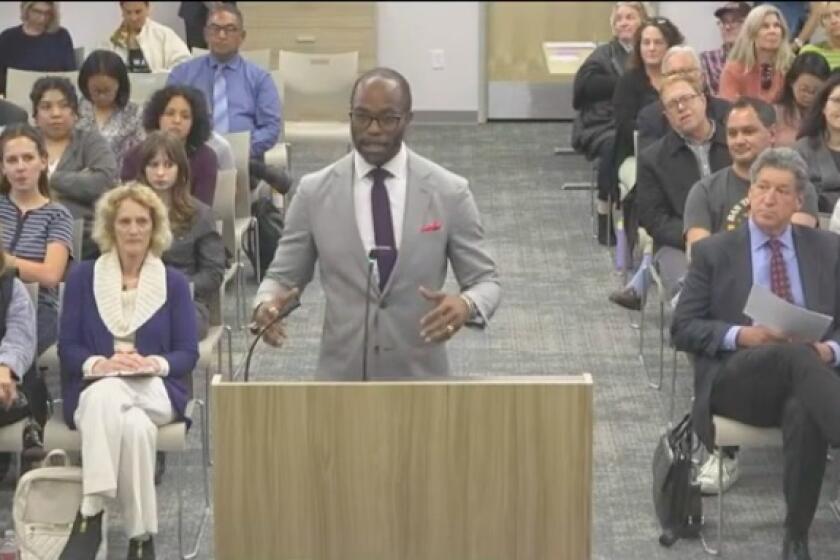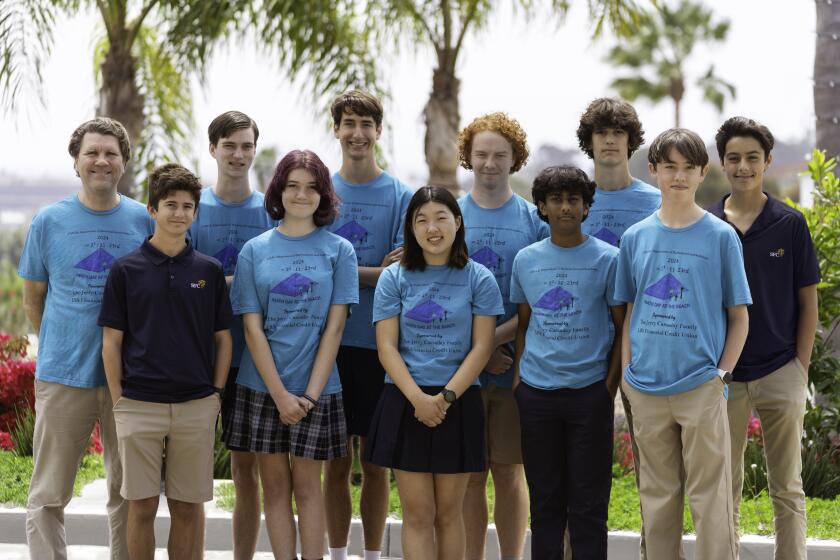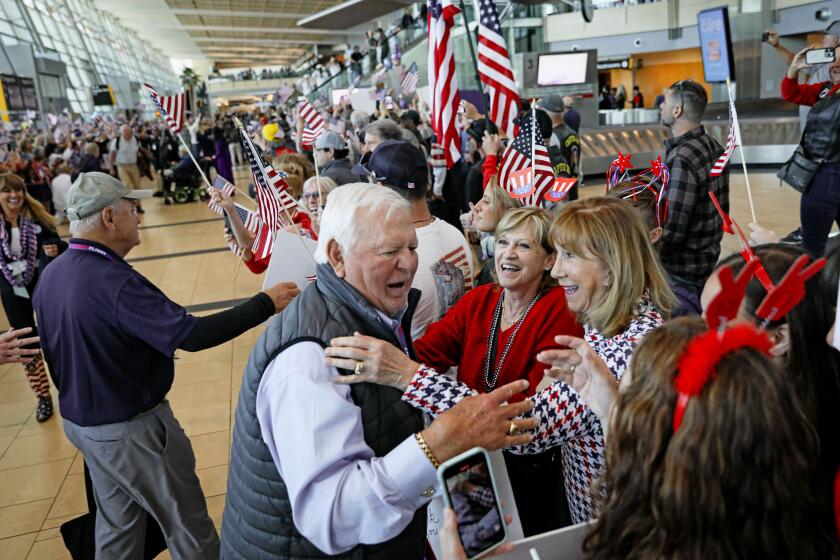Solana Beach School District takes green new approach to lunch waste
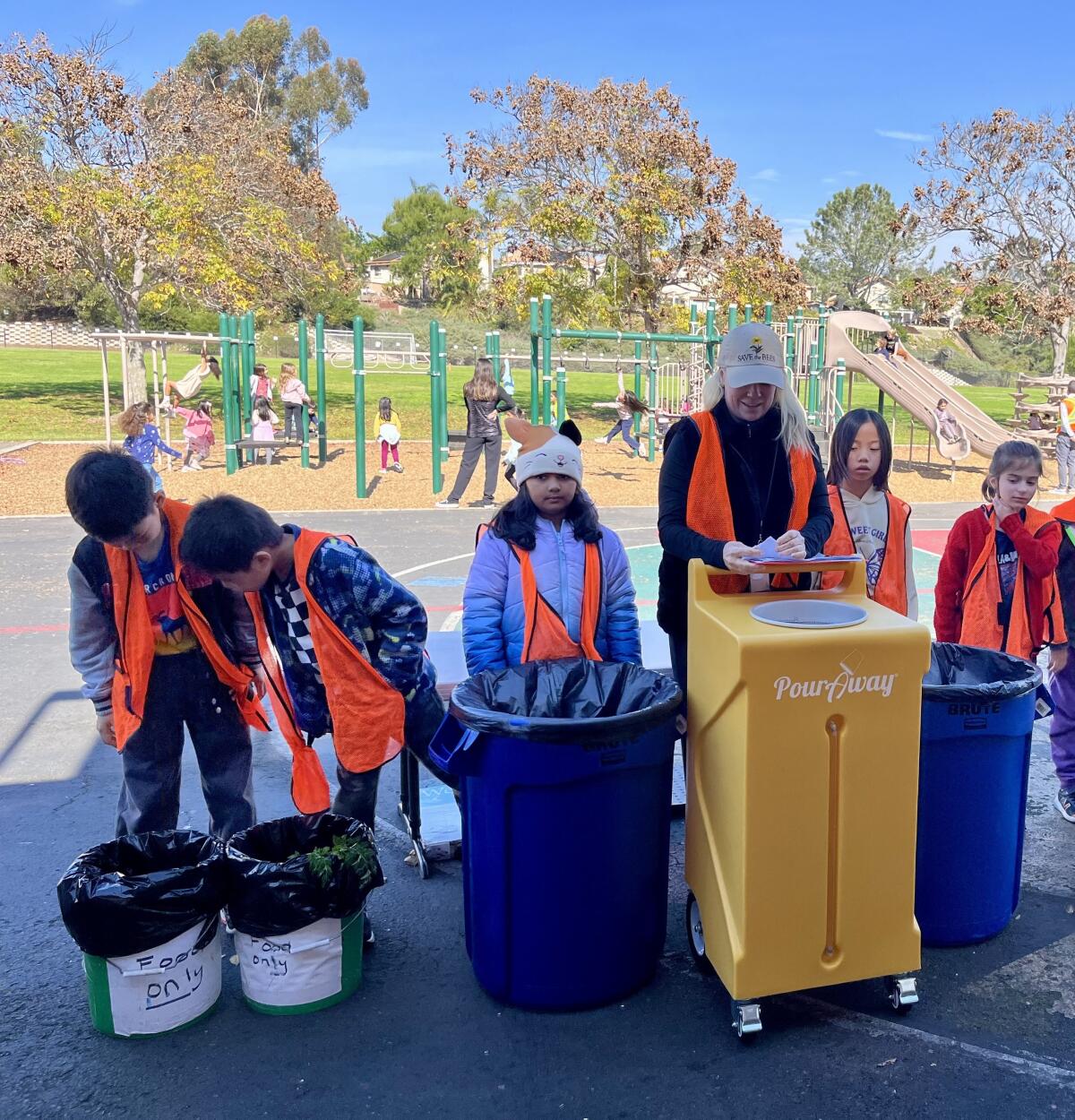
Solana Beach School District schools are implementing a new green routine when it comes to handling lunch waste. The goal: sending less to the landfill.
With the new program, the district is responding to Senate Bill 1383, which mandates practices by businesses and public agencies to reduce the volume of organic matter in California landfills, reducing methane and other greenhouse gas emissions.
Solana Vista School was the first to roll out the new lunchtime program last year, followed by Skyline—Interim Superintendent Sabrina Lee said the district consulted with Solana Center for Environmental Innovation and EDCO waste and recycling company to find the best practices.
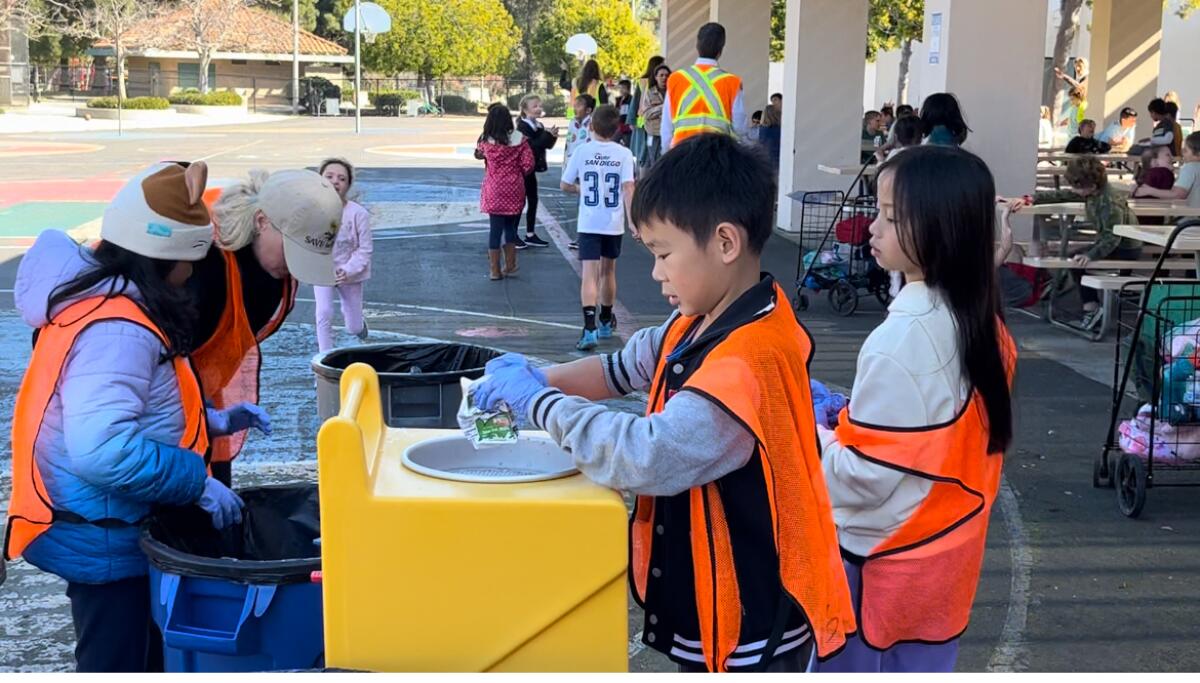
In launching the new program, students apply to be the social ambassadors at their school. They help to organize and separate compost, recycling, organics waste, liquids and trash into separate bins. They also sort out untouched and unwanted food that can be donated to food recovery programs. All of the Skyline sixth graders were also trained in food handling.
Organic separation of food scraps is being done in every school kitchen as well.
As part of implementing the new process, the school conducts a student-led food waste audit, tracking how much is collected in each category of waste.
In the initial audits, students were asked why they were disposing of foods or giving away unopened or uneaten food. Some said they didn’t like veggies, some said they were full and some of the responses were appropriately adorable like the one student who said they couldn’t eat their apple because “My tooth is wiggly, I can’t bite that.”
Students are learning more not to take what they won’t eat and they are excited by the opportunity to reduce the amount going into the landfill: “All of us are ready for this change and an environmental lens. We’re looking forward to this.” said Tiffany Farnsworth, the teacher on special assignment.
After collection, all of the waste categories are weighed. At Solana Vista, the daily counts included 12 pounds of food trays that go into organics processing, 29 pounds of excess consumable foods, 16 pounds of liquid, 56 pounds of excess non-consumable waste, and 19 pounds of trash.
“The students were always commenting in awe of how much food it was and questioning what they could do,” Farnsworth said. “All of us are ready for this change and an environmental lens.”
The programs are now fully launched at all but two district schools: A food waste audit will be conducted at Solana Ranch next week and Solana Santa Fe will begin in March.
Carmel Creek was one of the latest schools to start the program on Jan. 26. On the third day, the kids seemed to be getting the hang of things, led by Farnsworth and a group of dedicated third grade volunteers.
Students were mindful that any small plastic can’t be recycled such as straws and plastic sporks—students separated the napkin from the packaging to put into compost along with things like the leafy carrot tops from that day’s salad bar.
Students seemed to enjoy digging through trash with grabbers to make sure nothing had been put into the wrong bin.
Previously, milk or juice cartons couldn’t be recycled if they had liquid in them—now students learn to empty them so they can be recycled and not go straight for the landfill where it would take a long time to biodegrade.
Farnsworth said she’s noticed that students are more conscious of how much they are pouring out from their cartons into the receptacle—sometimes they realize that they can finish off the last few sips rather than just dump it.
Rolling out the new program, Farnsworth loves seeing the interactions between students as well as between students and the custodians as they take ownership their school environment, which in turn helps the entire community.
“It’s just really amazing,” Farnsworth said. “The student leaders are really giving a lot of direct tutorials and it’s very sweet.”
She asked third grade leader named Grace about helping the younger kindergartners learn the new routine.
“It’s kind of hard but they’re slowly learning,” Grace said.
As Lee said, this is an exploration year as all departments including child nutrition services, facilities, maintenance and instructional services are working together to implement the program, trying to learn lessons from the early pilots.
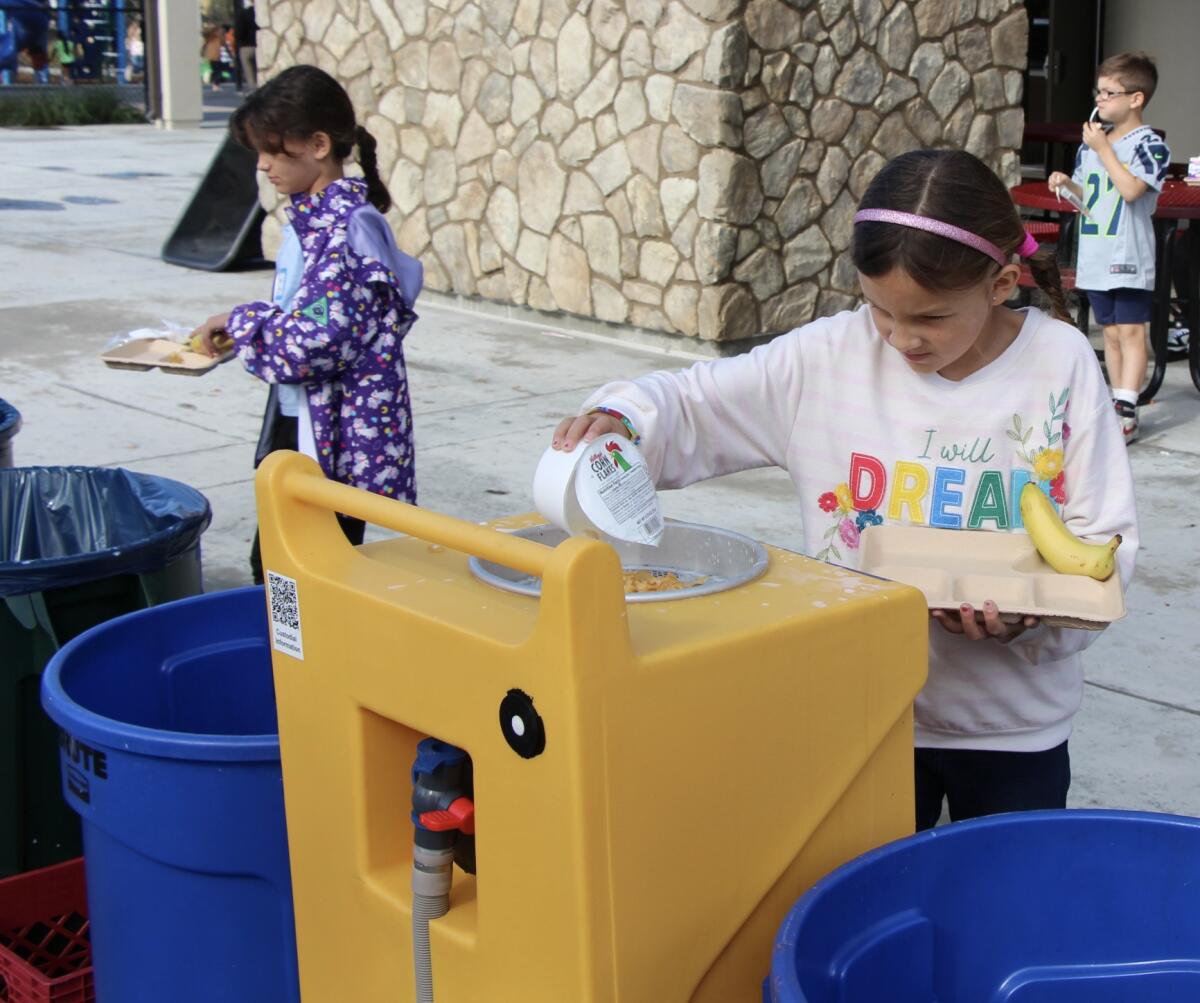
The district hopes to develop partnerships for food recovery programs such as 92130 Cares which runs weekly free farmers markets for low-income housing developments in Carmel Valley, the Oceanside Sanctuary food distribution center and Solana Beach Backpacks for Kids, which helps bridge the gap between free weekday school lunches and the weekend by providing backpacks filled with non-perishable food and snacks each weekend.
Ultimately, the district’s goal is to launch a full environmental stewardship curriculum.
“The whole concept of learn by doing is a phenomenal way for kids to learn,” SBSD Trustee Julie Union said during a board report on the program. “I’m really excited about the work that’s being done, it’s wonderful.”
Get the Del Mar Times in your inbox
Top stories from Carmel Valley, Del Mar and Solana Beach every Friday for free.
You may occasionally receive promotional content from the Del Mar Times.



